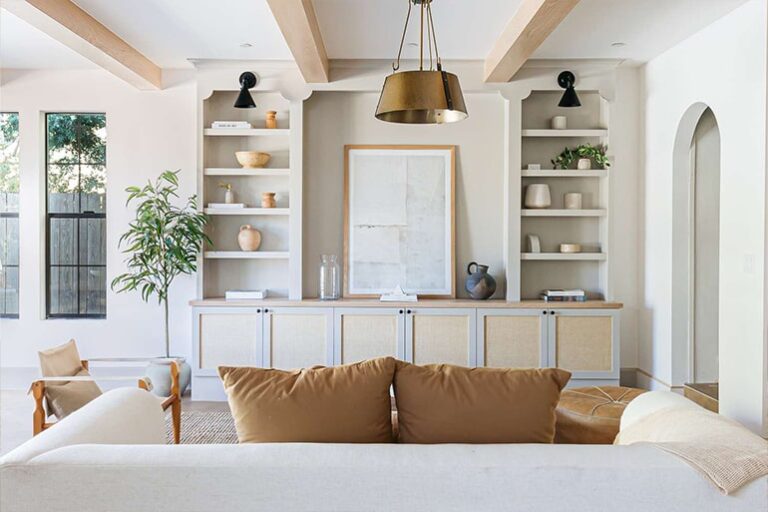Y’all! I am excited to talk about home renovation today!
If you’ve ever watched those home makeover shows and thought “I could do that!” only to start a project and find yourself drowning in decisions, timelines, and unexpected costs… then this post is absolutely for you!
My husband and I have tackled three major house renovations in the past seven years, and let me tell you, we learned things the hard way. Our first bathroom redo took TWICE as long as planned because we didn’t know what we were doing. But now? We’ve got systems that work like magic!
A shocking 85% of renovations go over budget or past deadline (or both!), according to a 2022 Houzz survey. But with good planning and smart strategies, you can be in that happy 15% who nail their projects on time and on budget.
Let’s jump right into making your renovation dreams come true without the typical headaches!
Why Property Renovation Is Important?
Before we dive into the “how,” let’s chat about the “why.” Renovating isn’t just about making things pretty (though that’s a fun part!).
A well-planned renovation boosts your property value – often returning 70-80% of your investment when you sell. Our kitchen update cost $22,000 but added nearly $35,000 to our home’s value!
Good renovations also make your space work better for YOU. That awkward corner in our living room became my favorite reading nook after we reimagined the space.
And let’s not forget about fixing those annoying problems that bug you daily. Remember that dripping faucet that kept me up at night?
Gone!
The squeaky stair that announced every midnight snack run? Fixed!
Those little quality-of-life improvements are priceless.
Plus, updating systems like plumbing and electrical work saves money long-term. After updating our ancient water heater, our utility bills dropped by $45 monthly. That’s $540 yearly going back into our pockets!
How to Streamline Your Property Renovation for Maximum Efficiency
Streamlining your renovation isn’t rocket science, but it does take planning. I’m going to walk you through the exact steps we use for our projects now. These steps have saved us thousands of dollars and countless headaches!
Let me break it down into manageable chunks that will take you from “what have I gotten myself into?!” to “wow, that was smoother than I expected!”
Make sure to have clear renovation goals
You wouldn’t start a road trip without knowing your destination, right? Same goes for renovations!
Write down your EXACT goals. Not just “update the kitchen” but details like “replace countertops with quartz, install white shaker cabinets, add island with seating for four.”
Our bathroom renovation had a clear list:
- Replace tub with walk-in shower
- Install double vanity with storage
- Add heated floors (because cold Minnesota mornings are BRUTAL!)
- Improve lighting with sconces and overhead fixture
This clarity helped us make quick decisions when questions came up during the process.
Ask yourself: What problems am I fixing? What’s my style vision? What functions must this space serve?
Take before photos! You’ll want to remember how far you’ve come when you’re in the middle of renovation chaos.
Create a comprehensive timeline
Time management makes or breaks a renovation. When we redid our home office, we broke the six-week project into specific phases:
Week 1: Demolition and prep work
Week 2: Electrical updates and wall repairs
Week 3: Flooring installation
Week 4: Built-in bookcase construction
Week 5: Painting and trim work
Week 6: Furniture placement and final touches
Building in buffer time saved us when our flooring shipment arrived five days late!
Talk to your contractors about realistic timeframes. Most pros tell me they add 20% extra time to their estimates because surprises ALWAYS happen.
Use a simple calendar or project app to track everything. I love Trello boards with color-coded tasks for each phase.
Do financial planning
Money stuff isn’t fun, but it’s crucial. Create a detailed budget that accounts for:
Materials (add 15% extra for waste) Labor costs Permit fees Delivery charges Tool rentals Temporary living arrangements if needed.
Our biggest budget-saving trick? Getting multiple bids for big jobs. We saved $3,200 on our roof by comparing three contractors!
Always keep a contingency fund. Experts recommend 10-20% of your total budget for surprises. When we found water damage behind our shower, that extra cash kept us from pausing the whole project.
And, you know, when I was doing my first home renovation 7 years back, I didn’t had enough fund. But, we somehow manage to get home equity loan, which allows us to use your existing home value to access funds at a competitive rate.
Choose the design
This is the fun part! Create a cohesive vision BEFORE buying anything.
I learned this lesson the hard way after purchasing a gorgeous farmhouse sink that completely clashed with the modern cabinet hardware I’d already installed. Oops!
Start a Pinterest board or physical inspiration folder. Group ideas by room and element (flooring, paint colors, fixtures).
Consider flow between spaces. Our whole first floor now has the same flooring to create a unified look.
Don’t forget the material contrasting! That gorgeous white marble might look amazing, but with three kids and two dogs, we chose a more practical quartz that mimics the look without the maintenance headaches.
Test paint colors on your actual walls – light looks different in every space. We painted six sample patches before finding the perfect gray for our living room.
Make sure to order materials in advance
Supply chain issues are real, folks! Order major materials WAY earlier than you think necessary.
For our bathroom renovation, we ordered tile 8 weeks in advance, and it arrived just two days before the installer needed it. Talk about cutting it close!
Create a spreadsheet tracking:
- What you ordered
- When you ordered it
- Expected arrival date
- Actual arrival date
- Where it’s stored
Some items that typically have long lead times: Custom cabinets (8-12 weeks) Special order windows (6-10 weeks) Custom countertops (3-4 weeks after template) Certain light fixtures (4-6 weeks)
When our pendant lights got backordered, we installed temporary lighting so work could continue. Flexibility is key!
Regularly monitor the progress
Daily check-ins keep small issues from becoming big problems.
During our kitchen renovation, I noticed the cabinet installer had misunderstood which wall would house the refrigerator. Catching this on day one saved a costly mistake!
Take progress photos every day. They’re not just fun to look back on—they help document what’s behind walls before they’re closed up.
Ask questions when something looks off. You don’t need to be an expert to spot potential issues.
Utilize technology
Apps and tech tools can simplify your renovation journey.
We use a shared album to send progress photos to family (who are WAY too interested in our bathroom tile choices!).
Room design apps let you visualize changes before making them. I tested five different paint colors virtually before opening a single can.
Project management apps keep everyone on the same page. When our contractor updated the timeline, everyone got notified automatically.
Smart home considerations are worth planning for during renovations. We added extra electrical outlets and smart switch wiring while the walls were open—so much easier than adding them later!
Be ready to handle unexpected issues
Surprises happen to EVERYONE. Having a plan for dealing with them makes all the difference.
When we found ancient knob-and-tube wiring in our 1940s home, we already had an electrician on standby as part of our contingency planning.
Common surprises include: Water damage Structural issues Outdated wiring Asbestos or lead paint in older homes Incorrect previous repairs
The renovation rule we live by: “Measure twice, panic once.” A little planning reduces the freak-out factor!
Regularly inspect everything
Don’t wait until the end to check quality. Inspect work at each stage.
Daily walk-throughs let you spot issues while they’re easy to fix. During our living room update, I noticed the crown molding wasn’t matching at the corners. Much easier to address while the crew was still on site!
If something doesn’t look right, it probably isn’t. Trust your eye.
Create a “punch list” of small items needing correction. Keep it updated throughout the project.
Communicate clearly with your contractor
Good communication prevents 90% of renovation headaches.
Establish preferred communication methods upfront. Our contractor prefers texts for quick questions and email for anything needing documentation.
Have regular standing meetings—we do Monday morning check-ins to review the week ahead.
Put EVERYTHING in writing. Verbal agreements are easily forgotten or misunderstood.
Be kind but direct about concerns. Our painter appreciated when I pointed out some missed spots in a bathroom instead of waiting until final inspection.
Send meeting notes to confirm what was discussed and decided. This simple habit has saved us from so many misunderstandings.
Conclusion
Whew! Streamlining renovations takes work, but the payoff is SO worth it! Our last project finished three days early and just 4% over budget (which counts as a win in renovation world!).
Remember that clear goals, solid planning, and good communication make all the difference between a renovation nightmare and success story.
The joy of walking into a space that now works perfectly for your life—that’s the real reward. Our newly renovated kitchen has become the heart of our home, where we gather for meals, homework, and late-night cookie baking sessions.
I hope these tips help your next project go smoothly! I’d love to hear about your renovation plans or lessons learned in the comments.
Now excuse me while I go browse tile samples for our next project… because apparently renovations are addictive!



